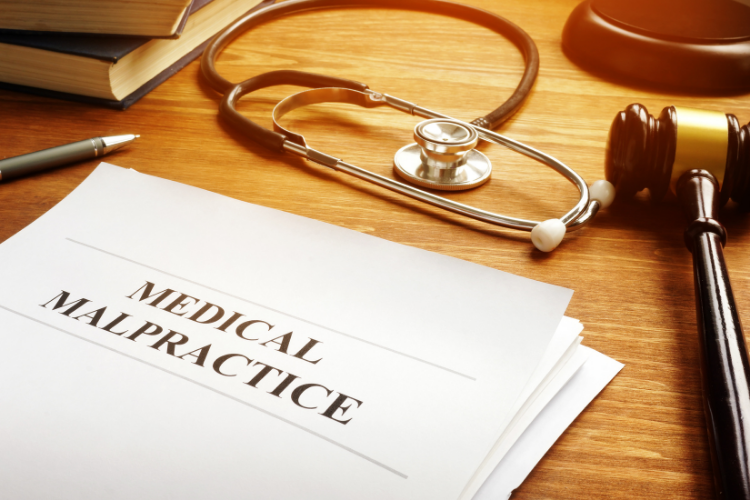
What Is the Difference Between Delay in Diagnosis and Failure to Diagnose in Medical Malpractice?
Failure to diagnose and delay in diagnosis can both take place in any healthcare facility from a primary care provider’s office to an emergency room or an intensive care unit.
Medical misdiagnosis is a form of medical malpractice that can lead to serious consequences for the victim. Due to the complex nature of these cases, which usually involve entering a legal battle with a large hospital system, victims of medical misdiagnosis often go without the compensation, they are entitled to, while the medical professionals who are responsible for their suffering go on without facing any consequences, and potentially making the same mistake again.
Continue reading for an explanation of the differences between two of the main types of medical misdiagnosis cases: delay in diagnosis and failure to diagnose.
What Does Delay in Diagnosis Mean?
A delay in diagnosis occurs when a physician or other medical professional is too slow to diagnose or treat a particular condition that a patient has. Reasons why a delay in diagnosis may occur include:
A physician choosing not to take the symptoms a patient reports seriously until the condition has seriously progressed.
A medical team failing to treat a condition or symptoms of a condition in a timely manner, especially in an emergency room or urgent care facility.
A physician failing to conduct routine medical tests.
A physician misreading the results of routine or requested medical tests.
Tragically, many delays in diagnosis involve various types of cancer. When caught and treated in its earliest stages, cancer can be taken care of relatively quickly and inexpensively, while minimizing the pain that the patient is subjected to. As it progresses to more advanced stages, however, procedures become more invasive and more expensive, and treatment, as well as the condition itself, becomes increasingly more painful. This is why it is essential that cancer is detected as early as possible and medical doctors or other medical professionals need to be held responsible when it is not.
The early stages of cancer may begin before noticeable symptoms even present themselves. For this reason, a physician failing to conduct regular screenings (such as mammograms for breast cancer) that could have caught the disease early on must also be held responsible.
What Does Failure to Diagnose Mean?
In failure to diagnose cases, the medical professional simply never makes the appropriate diagnosis. This may be for a variety of reasons, including:
A physician failing to conduct routine medical tests.
A physician misreading laboratory results, x-rays, or other routine medical tests.
A physician brushing a patient’s reported symptoms aside or not taking them seriously.
Failure to diagnose can involve making no diagnosis at all due to misread results or not taking symptoms seriously enough, or making an incorrect diagnosis. Often, when incorrect diagnoses are made, the patient is diagnosed with something much less serious than the condition they actually have. For example, a patient in the emergency room with symptoms of a heart attack may be sent home diagnosed with a gastrointestinal problem. This kind of mistake has the potential to be fatal.
Additionally, when a patient is diagnosed with the wrong condition, they may be subjected to unnecessary procedures, surgeries, prescriptions, and other treatments that don’t address the underlying cause of their symptoms and lead to a huge financial burden, time is taken off work, and pain and suffering.
Even in less extreme cases, where a physician misreads x-ray results or the results of a blood test and misses an internal or hormonal problem, even relatively minor conditions left untreated can lead to unnecessary suffering and financial burden for the patient in the future. Unfortunately, as with delay in diagnosis, many failures to diagnose involve a missed diagnosis of cancer. This can lead to years of unnecessary pain and suffering and early death for the patient.
What Are the Consequences of Medical Misdiagnosis?
Failure to diagnose and delay in diagnosis can both take place in any healthcare facility from a primary care provider’s office to an emergency room or an intensive care unit. While it may seem unlikely that serious suffering will occur because of medical misdiagnosis, a study by Johns Hopkins University in 2019 found that a staggering one-third of patients who were misdiagnosed suffered from permanent damage or death as a result of their misdiagnosis. The researchers estimated that between 40,000 and 80,000 people die each year from causes related to a medical misdiagnosis.
However, the consequences of medical misdiagnosis for the patient are not limited to wrongful death and unnecessary pain and suffering. In any medical malpractice or medical misdiagnosis case, the settlement should account for:
A patient and their family’s lost wages due to the misdiagnosis
A patient’s lost potential future earnings due to the misdiagnosis’
All future medical costs associated with the misdiagnosis.
Source: https://www.jcreiterlaw.com/medical-malpractice-attorney-nyc/
